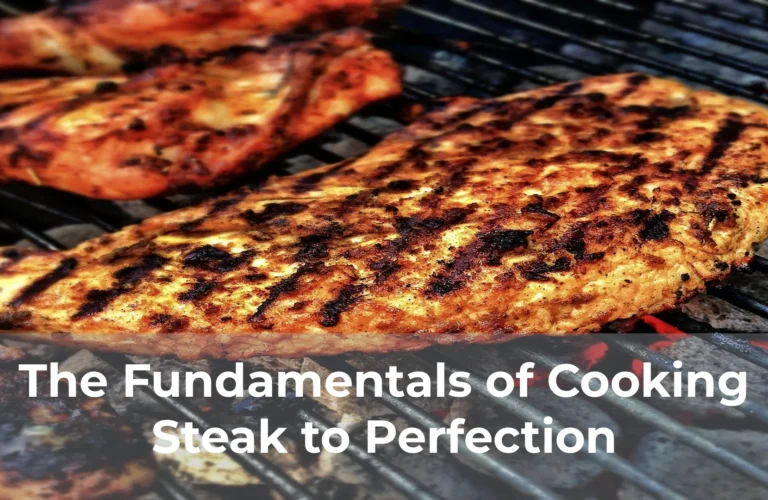The Fundamentals of Cooking Steak to Perfection
Mastering the art of cooking steak to perfection is a skill that every aspiring home chef should strive to achieve. Whether you prefer a tender medium-rare or a well-done charred crust, understanding the fundamentals of cooking steak will elevate your culinary prowess to new heights. From selecting the right cut of meat to mastering the perfect sear, this article will guide you through the essential techniques and tips to ensure a mouthwatering steak every time.
First and foremost, selecting the right cut of steak is crucial. Different cuts offer varying levels of tenderness, flavor, and marbling, all of which contribute to the final outcome. Popular options like ribeye, sirloin, and filet mignon each have their unique characteristics, so it’s worth exploring and experimenting to find your personal favorite. Additionally, consider the thickness of the steak, as thicker cuts require longer cooking times to ensure an even doneness throughout.
The next key step in cooking steak to perfection is achieving a beautiful sear. Searing not only creates an appetizing caramelized crust but also locks in the steak’s juices, resulting in a tender and flavorful interior. To achieve this, make sure to thoroughly dry the steak before seasoning it generously with salt and pepper. Heat a cast-iron skillet or grill pan over high heat and add a small amount of oil with a high smoke point, such as canola or avocado oil. Sear the steak for a few minutes on each side until a golden-brown crust forms, then reduce the heat and continue cooking until it reaches your desired level of doneness.
The Importance of Choosing the Right Cut
When it comes to choosing the right cut, it is not just about fashion or style; rather, it is about enhancing your overall appearance and boosting your confidence. The right cut can transform your look, accentuating your best features and downplaying any flaws. Whether you prefer a short and edgy haircut or a long and flowing mane, understanding the importance of choosing the right cut is crucial. It can make a world of difference in how you feel about yourself and how others perceive you. So, before you sit in that salon chair, take the time to consider the shape of your face, your hair texture, and your personal style. Don’t underestimate the power of a well-chosen cut to elevate your entire look.
Understanding the Role of Marbling
Marbling, often referred to as intramuscular fat, is a critical component in the world of meat production and culinary arts. But what exactly is marbling, and why does it hold such importance? Marbling refers to the delicate webbing of fat that is distributed within the muscle fibers of meat. This fat not only adds flavor and juiciness but also influences the tenderness and overall quality of the meat. Understanding the role of marbling is essential for both consumers and professionals in the food industry.
The presence of marbling affects the eating experience in profound ways. As the meat cooks, the intramuscular fat melts, ensuring that the meat remains moist and succulent. This fat also contributes to the flavor profile, enhancing the taste and richness of the meat. The marbling’s influence on tenderness is equally significant. The intermingling of fat within the muscle fibers acts as a natural lubricant, resulting in a more tender texture. Consequently, the presence and distribution of marbling are factors that significantly impact the overall quality and desirability of a cut of meat.
For consumers, understanding marbling can assist in making informed choices when purchasing meat. Different cuts of meat possess varying degrees of marbling, which affects their taste, tenderness, and cooking methods. For example, well-marbled cuts such as ribeye or Wagyu beef tend to be more tender and flavorful, making them ideal for grilling or searing. On the other hand, leaner cuts with less marbling, like beef tenderloin, are more suited for quick cooking methods like roasting or pan-searing. By understanding marbling and its impact, consumers can select the right meat cuts to suit their preferences and cooking techniques.




